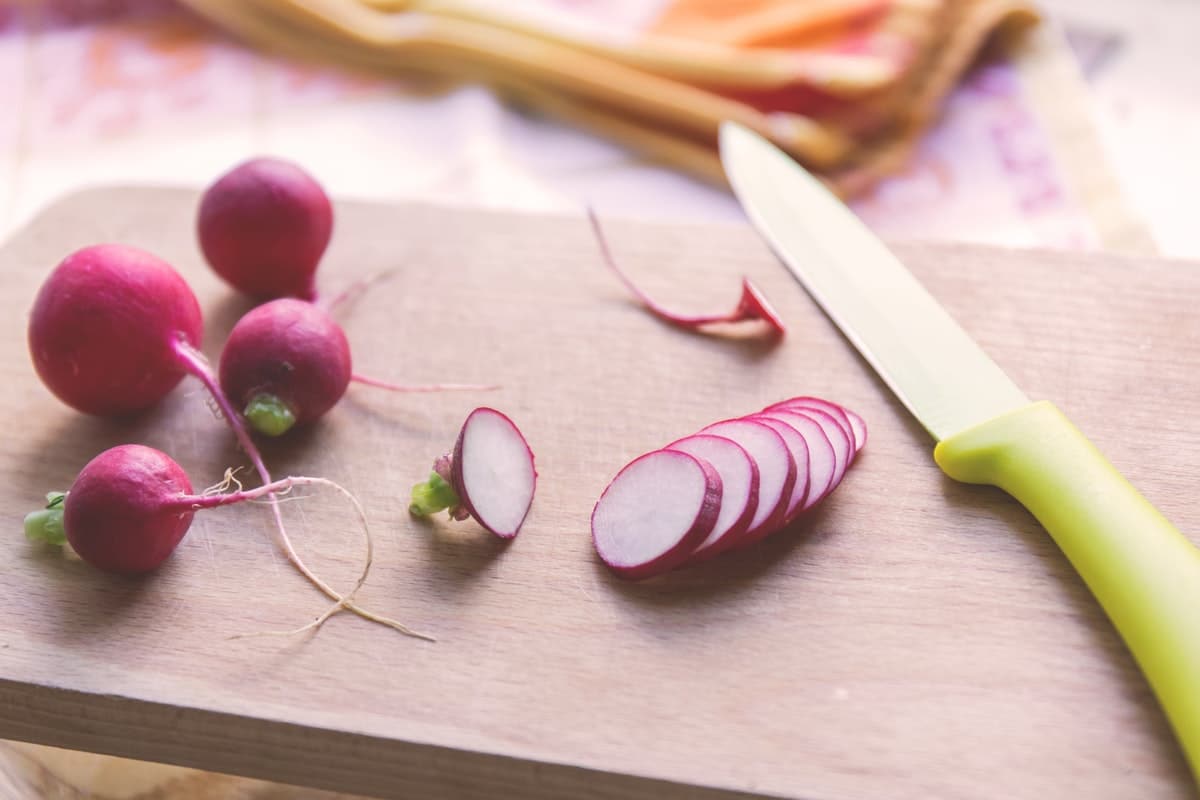Wooden plates and cutting boards have been around for centuries, so we’re sure that you won’t get sick from just using them. However, based on current health standards, there are some things that we need to do to keep this kitchenware safe for daily use.
In recent years, we have seen a surge of people who are now more interested in using wooden implements in the kitchen because of the fear of plastics leaching out chemicals when used to prepare and store food and ingredients.
While food-grade plastic poses little harm to people, some are just glad that they can shift to using wooden plates and wooden cutting boards. Some kinds of wood, such as oak wood and pine wood, have natural abilities to resist fungi, bacteria, and other pathogens.
Some studies have shown that it is safer to use wooden chopping boards because once the wood absorbs the bacteria, they don’t go back up, and they die where they are, deep in the chopping board itself.
The main risk, however, is that it is easier to split and crack wooden chopping boards. The small spaces that result from knife damage can also result in contamination and cross-contamination of the ingredients that you place on the chopping boards.
The same logic applies to wooden plates, though these are not usually used to prepare food. If there are splits and damages on the surface of the wooden plate, then bits of food and moisture can become stuck in these spaces and cause problems. Bacteria can release invisible toxins that can contaminate your diet, and this can result in you getting sick from eating food that has been prepared or kept on these surfaces.
Why do wooden boards and plates crack?
In addition to the usual wear and tear from use, one of the main reasons why wooden implements in the kitchen split and crack is because they are not appropriately seasoned. Seasoning is the process of applying neutral oil to the surface of the wooden chopping board or plate to keep the wood healthy and hydrated. In the case of wooden chopping boards, too much drying is not a good thing as wood fibers can separate from each other much more smoothly if there is no moisture to be had.
On the other hand, if you soak your chopping board or plates too often or for too long, you get soggy wooden fibers that are weakened, and this can also lead to premature breaking of chopping boards and slabs. The big issue with wooden implements (including spoons of course) is even hairline-sized cracks and splits in the wood can be cause for concern because bacteria only need a minuscule amount of leftover food to thrive.
How can you remedy cracks and other damage to your cutting board and plates?
If you spent a lot of money on a premium wooden chopping board, tossing it in the trash will probably be the last thing on your mind, and we understand. You have two options if you begin to see hairline cracks. The first one is using wood glue to seal these cracks. Apply the wood glue to the cracks and use sandpaper to remove the excess adhesive after drying.
The wood glue will seal the cracks and other damage to the surface of the wood, and you can continue using the chopping board as if nothing happened. The dried glue will not affect your food after curing. Your second option is to bring your chopping board to a woodworker (anyone who has experience creating wooden fixtures and other items) for repair. Depending on the damage, the woodworker will likely use resin and other products to seal the damage on the surface of your chopping board.
As for wooden spoons, these are not expensive at all, and when you crack one for whatever reason, it would be best just to toss the broken spoon and to buy a new one.
Keeping Your Wooden Boards, Plates and Spoons Clean
- As a golden rule, never use wooden implements and surfaces without first washing them. Also, never reuse boards even if they have already dried, as drying doesn’t kill bacteria – some bacteria can linger on wood for several days easily.
- After using your wooden cutting boards, plates, or spoons, soak and scrub them in warm water with dish soap. Make sure that you remove all the leftover bits of food and stains, too. Rinse your wooden implements and allow them to air dry after patting with a clean dishcloth. Exposing them to sunlight is also an excellent way to remove any leftover bacteria. However, we warn against overexposure to the sun as this can result in the splitting of the wood if the fibers become too dry.
- Chlorine or bleach should be used after preparing food on a wooden chopping board. After washing with warm water and dish soap, pour a bleach solution onto the wooden chopping board and leave it there for about ten minutes. Rinse thoroughly before drying and placing it back onto the organizer.
- If you are using cutting boards that are inexpensive and on the thin side, discard them when they begin showing signs of wear. If you want your chopping board to the last longer, purchase a higher quality one made of hardwood. Hardwood chopping boards are more resistant to knife damage and will last for years – and will stay safe for food preparation even if you use the board daily.
- Remember to season your boards, plates, and spoons regularly to prevent splitting. Remember to use neutral vegetable oils for seasoning wooden boards and slabs. Allow the oil to be absorbed overnight before using the chopping board again.
- We do not recommend clearing your wooden spoons by putting them in a dishwasher. They will soak up too much moisture in the process, and again, this will weaken the wood fibers.

